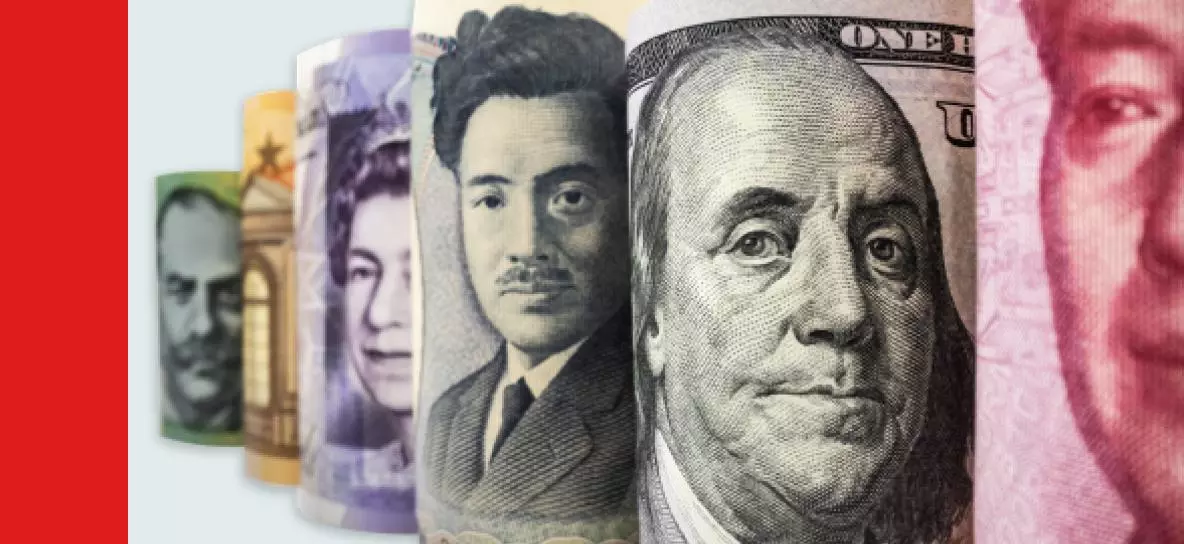Why tariffs may not be the trade war trigger markets fear
Trade war concerns often spark market volatility, but historical patterns suggest tariffs are more often used as negotiating tactics than permanent policy measures.

Understanding tariffs as negotiation tools
The use of tariffs in international trade extends far beyond simple protectionism. Political leaders frequently deploy tariff threats as leverage in broader trade negotiations, rather than as definitive policy measures.
Recent market reactions to tariff announcements have highlighted the delicate balance between political posturing and economic reality. The signs often reflect immediate fear rather than long-term fundamentals.
Historical patterns demonstrate that tariff threats rarely translate into permanent trade barriers. Instead, they typically serve as opening gambits in complex trade negotiations, often leading to more balanced agreements.
Markets tend to stabilise once the actual economic impact becomes clearer, suggesting that initial reactions may be overstated. This creates opportunities for traders who can look beyond the immediate headlines.
The role of Congress in trade policy
Despite executive powers to impose certain tariffs, significant trade restrictions typically require Congressional approval. This creates a substantial barrier to implementing lasting tariff measures.
Recent Congressional activity suggests limited appetite for new trade restrictions. Both Republican and Democratic leaders have expressed scepticism about broad tariff implementation, particularly regarding US allies.
The forex market often reflects this political reality, with currency pairs showing more stability than equity markets during tariff-related news cycles.
This legislative framework provides a crucial check on executive trade powers, making it harder to implement sweeping tariff changes without broad political support.
Market reactions and trading implications
Historical data shows that markets often overreact to initial tariff announcements. Volumes often spike during these periods thanks to the immediacy of headlines in this world of 24 hour news and social media, and round-the-clock trading.
Volatility tends to be most pronounced in sectors directly affected by tariff threats, such as manufacturing and agriculture. However, these movements frequently reverse once negotiations progress.
Understanding this pattern can help traders develop more nuanced strategies. Rather than reacting to every headline, successful traders often focus on underlying economic fundamentals.
The key is maintaining perspective on the difference between political rhetoric and actual policy implementation.
Impact on different market sectors
Various sectors respond differently to tariff threats, with some showing more sensitivity than others. Industrial stocks often experience the most immediate volatility.
Technology and consumer goods companies with global supply chains face particular scrutiny during trade tensions. Their share trading patterns often reflect broader market concerns about supply chain disruption.
The commodity trading sector also sees significant movement during these periods, as tariffs can directly impact raw material prices.
Understanding these sector-specific responses helps traders identify potential opportunities and risks during periods of trade tension.
How to trade during periods of trade tension
- Research historical patterns of market reactions to tariff announcements
- Choose whether you want to trade or invest
- Open an account with us
- Monitor market movements and potential trading opportunities
- Place your trades with appropriate risk management strategies
The key to successful trading during periods of trade tension lies in maintaining a balanced perspective and avoiding knee-jerk reactions to headlines.
Remember that market volatility creates both risks and opportunities. Proper risk management becomes especially crucial during these periods.
A well-researched trading strategy should account for both immediate market reactions and longer-term economic fundamentals.
Consider using stop-losses and other risk management tools to protect your positions during periods of heightened volatility.
This information has been prepared by IG, a trading name of IG Markets Limited. In addition to the disclaimer below, the material on this page does not contain a record of our trading prices, or an offer of, or solicitation for, a transaction in any financial instrument. IG accepts no responsibility for any use that may be made of these comments and for any consequences that result. No representation or warranty is given as to the accuracy or completeness of this information. Consequently any person acting on it does so entirely at their own risk. Any research provided does not have regard to the specific investment objectives, financial situation and needs of any specific person who may receive it. It has not been prepared in accordance with legal requirements designed to promote the independence of investment research and as such is considered to be a marketing communication. Although we are not specifically constrained from dealing ahead of our recommendations we do not seek to take advantage of them before they are provided to our clients. See full non-independent research disclaimer and quarterly summary.

Start trading forex today
Find opportunity on the world’s most-traded – and most-volatile – financial market.
- Trade spreads from just 0.6 points on EUR/USD
- Analyse with clear, fast charts
- Speculate wherever you are with our intuitive mobile apps
See an FX opportunity?
Try a risk-free trade in your demo account, and see whether you’re onto something.
- Log in to your demo
- Take your position
- See whether your hunch pays off
See an FX opportunity?
Don’t miss your chance – upgrade to a live account to take advantage.
- Get spreads from just 0.6 points on popular pairs
- Analyse and deal seamlessly on fast, intuitive charts
- See and react to breaking news in-platform
See an FX opportunity?
Don’t miss your chance. Log in to take your position.
Live prices on most popular markets
- Equities
- Indices
- Forex
- Commodities
Prices above are subject to our website terms and agreements. Prices are indicative only. All share prices are delayed by at least 15 minutes.
Prices above are subject to our website terms and agreements. Prices are indicative only. All shares prices are delayed by at least 15 mins.
